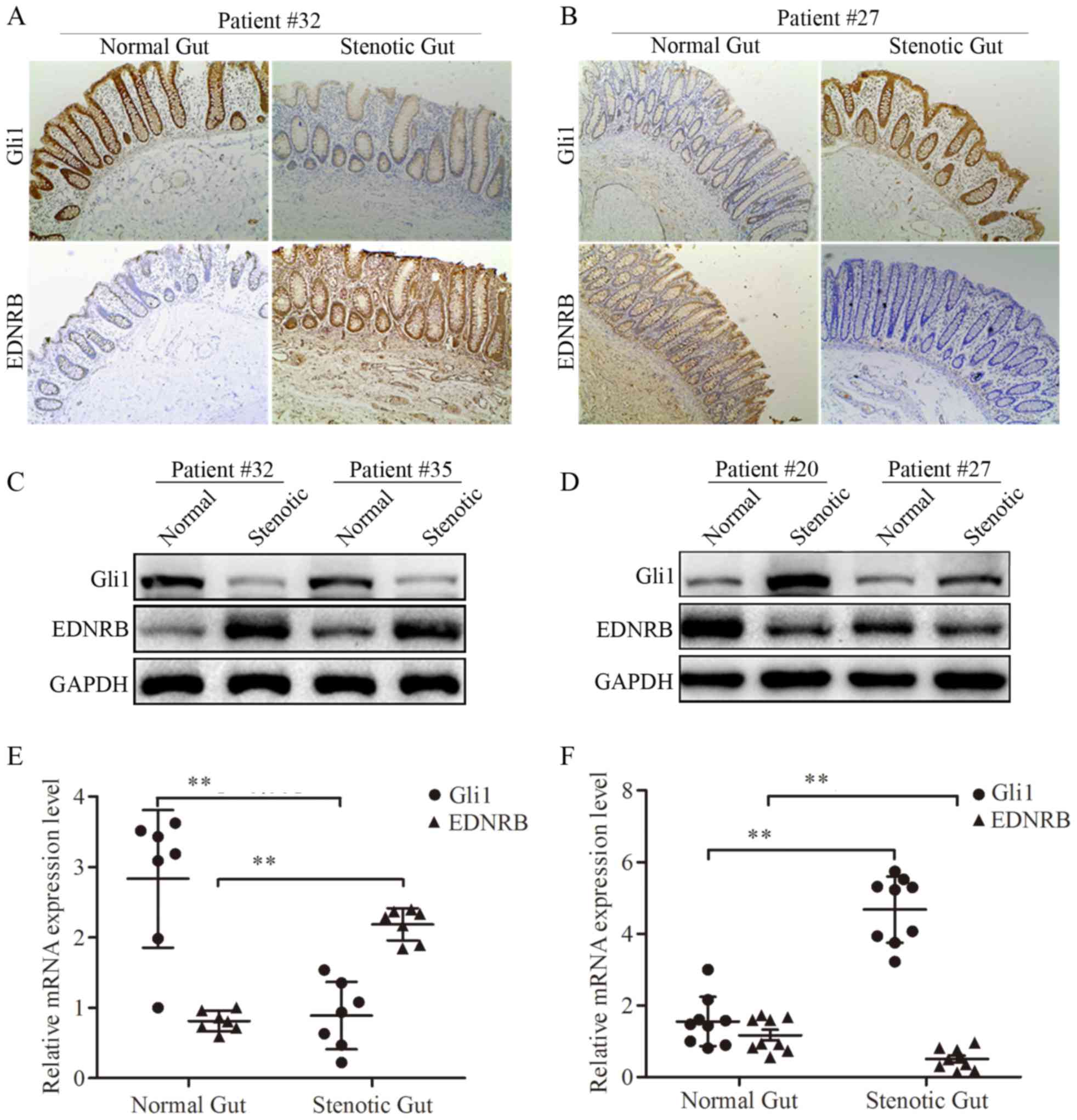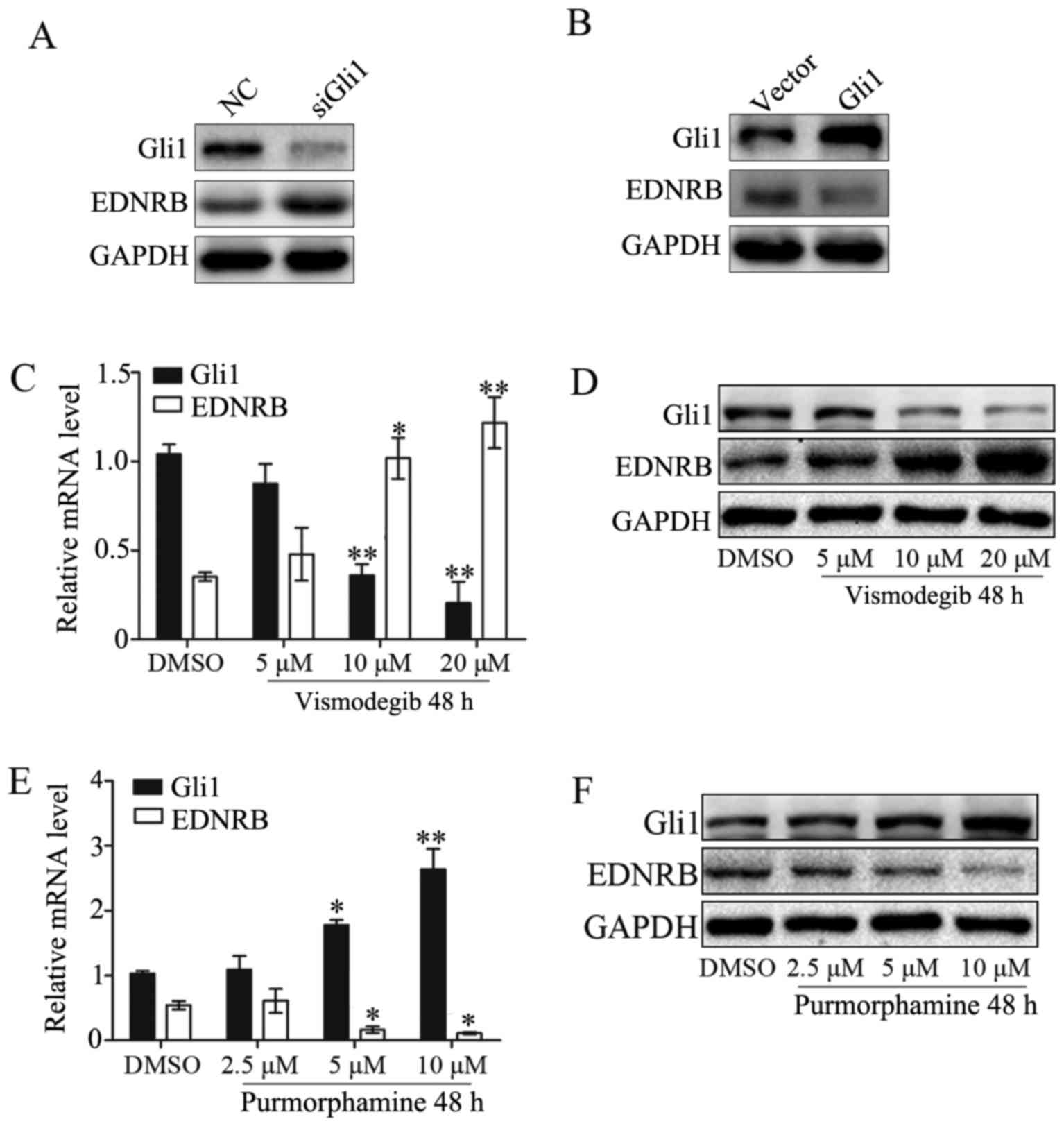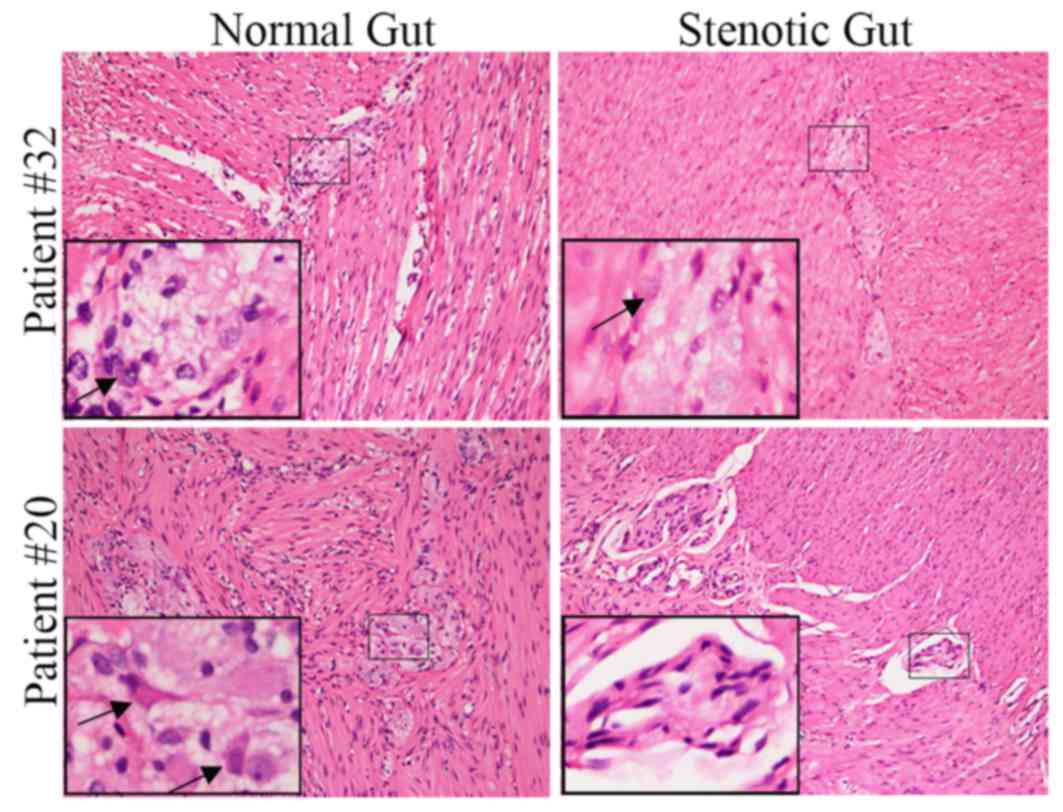|
1
|
Wetherill C and Sutcliffe J: Hirschsprung
disease and anorectal malformation. Early Hum Dev. 90:927–932.
2014. View Article : Google Scholar : PubMed/NCBI
|
|
2
|
Pan ZW and Li JC: Advances in molecular
genetics of Hirschsprung's disease. Anat Rec (Hoboken).
295:1628–1638. 2012. View
Article : Google Scholar : PubMed/NCBI
|
|
3
|
Skinner MA: Hirschsprung's disease. Curr
Probl Surg. 33:389–460. 1996. View Article : Google Scholar : PubMed/NCBI
|
|
4
|
Heanue TA and Pachnis V: Enteric nervous
system development and Hirschsprung's disease: Advances in genetic
and stem cell studies. Nat Rev Neurosci. 8:466–479. 2007.
View Article : Google Scholar : PubMed/NCBI
|
|
5
|
Takawira C, D'Agostini S, Shenouda S,
Persad R and Sergi C: Laboratory procedures update on Hirschsprung
disease. J Pediatr Gastroenterol Nutr. 60:598–605. 2015. View Article : Google Scholar : PubMed/NCBI
|
|
6
|
Schriemer D, Sribudiani Y, IJpma A,
Natarajan D, MacKenzie KC, Metzger M, Binder E, Burns AJ, Thapar N,
Hofstra RMW and Eggen BJL: Regulators of gene expression in Enteric
Neural Crest Cells are putative Hirschsprung disease genes. Dev
Biol. 416:255–265. 2016. View Article : Google Scholar : PubMed/NCBI
|
|
7
|
Bergeron KF, Silversides DW and Pilon N:
The developmental genetics of Hirschsprung's disease. Clin Genet.
83:15–22. 2013. View Article : Google Scholar : PubMed/NCBI
|
|
8
|
Panza E, Knowles CH, Graziano C, Thapar N,
Burns AJ, Seri M, Stanghellini V and De Giorgio R: Genetics of
human enteric neuropathies. Prog Neurobiol. 96:176–189. 2012.
View Article : Google Scholar : PubMed/NCBI
|
|
9
|
Butler Tjaden NE and Trainor PA: The
developmental etiology and pathogenesis of Hirschsprung disease.
Transl Res. 162:1–15. 2013. View Article : Google Scholar : PubMed/NCBI
|
|
10
|
Mao J, Kim BM, Rajurkar M, Shivdasani RA
and McMahon AP: Hedgehog signaling controls mesenchymal growth in
the developing mammalian digestive tract. Development.
137:1721–1729. 2010. View Article : Google Scholar : PubMed/NCBI
|
|
11
|
Hui CC and Angers S: Gli proteins in
development and disease. Annu Rev Cell Dev Biol. 27:513–537. 2011.
View Article : Google Scholar : PubMed/NCBI
|
|
12
|
Huang H, Cotton JL, Wang Y, Rajurkar M,
Zhu LJ, Lewis BC and Mao J: Specific requirement of Gli
transcription factors in Hedgehog-mediated intestinal development.
J Biol Chem. 288:17589–17596. 2013. View Article : Google Scholar : PubMed/NCBI
|
|
13
|
Charrier B and Pilon N: Toward a better
understanding of enteric gliogenesis. Neurogenesis (Austin).
4:e12939582017. View Article : Google Scholar : PubMed/NCBI
|
|
14
|
Nagy N, Barad C, Graham HK, Hotta R, Cheng
LS, Fejszak N and Goldstein AM: Sonic hedgehog controls enteric
nervous system development by patterning the extracellular matrix.
Development. 143:264–275. 2016. View Article : Google Scholar : PubMed/NCBI
|
|
15
|
Ramalho-Santos M, Melton DA and McMahon
AP: Hedgehog signals regulate multiple aspects of gastrointestinal
development. Development. 127:2763–2772. 2000.PubMed/NCBI
|
|
16
|
Fu M, Lui VC, Sham MH, Pachnis V and Tam
PK: Sonic hedgehog regulates the proliferation, differentiation,
and migration of enteric neural crest cells in gut. J Cell Biol.
166:673–684. 2004. View Article : Google Scholar : PubMed/NCBI
|
|
17
|
Liu JA, Lai FP, Gui HS, Sham MH, Tam PK,
Garcia-Barcelo MM, Hui CC and Ngan ES: Identification of GLI
mutations in patients with hirschsprung disease that disrupt
enteric nervous system development in mice. Gastroenterology.
149:1837–1848.e5. 2015. View Article : Google Scholar : PubMed/NCBI
|
|
18
|
Baynash AG, Hosoda K, Giaid A, Richardson
JA, Emoto N, Hammer RE and Yanagisawa M: Interaction of
endothelin-3 with endothelin-B receptor is essential for
development of epidermal melanocytes and enteric neurons. Cell.
79:1277–1285. 1994. View Article : Google Scholar : PubMed/NCBI
|
|
19
|
Bondurand N, Natarajan D, Barlow A, Thapar
N and Pachnis V: Maintenance of mammalian enteric nervous system
progenitors by SOX10 and endothelin 3 signalling. Development.
133:2075–2086. 2006. View Article : Google Scholar : PubMed/NCBI
|
|
20
|
Kenny SE, Hofstra RM, Buys CH, Vaillant
CR, Lloyd DA and Edgar DH: Reduced endothelin-3 expression in
sporadic Hirschsprung disease. Br J Surg. 87:580–585. 2000.
View Article : Google Scholar : PubMed/NCBI
|
|
21
|
Sergi CM, Caluseriu O, McColl H and
Eisenstat DD: Hirschsprung's disease: Clinical dysmorphology,
genes, micro-RNAs, and future perspectives. Pediatr Res.
81:177–191. 2017. View Article : Google Scholar : PubMed/NCBI
|
|
22
|
Druckenbrod NR and Epstein ML:
Age-dependent changes in the gut environment restrict the invasion
of the hindgut by enteric neural progenitors. Development.
136:3195–3203. 2009. View Article : Google Scholar : PubMed/NCBI
|
|
23
|
Chen B, Ouyang HL, Wang WH, Yin YH, Yan
LN, Yang B and Xue ZF: Hirschsprung disease is associated with an
L286P mutation in the fifth transmembrane domain of the
endothelin-B receptor in the N-ethyl-N-nitrosourea-induced mutant
line. Exp Anim. 65:245–251. 2016. View Article : Google Scholar : PubMed/NCBI
|
|
24
|
Tang W, Li B, Tang J, Liu K, Qin J, Wu W,
Geng Q, Zhang J, Chen H, Xu X and Xia Y: Methylation analysis of
EDNRB in human colon tissues of Hirschsprung's disease. Pediatr
Surg Int. 29:683–688. 2013. View Article : Google Scholar : PubMed/NCBI
|
|
25
|
Chaturvedi NK, McGuire TR, Coulter DW,
Shukla A, McIntyre EM, Sharp JG and Joshi SS: Improved therapy for
neuroblastoma using a combination approach: Superior efficacy with
vismodegib and topotecan. Oncotarget. 7:15215–15229. 2016.
View Article : Google Scholar : PubMed/NCBI
|
|
26
|
Livak KJ and Schmittgen TD: Analysis of
relative gene expression data using real-time quantitative PCR and
the 2(-Delta Delta C(T)) method. Methods. 25:402–408. 2001.
View Article : Google Scholar : PubMed/NCBI
|
|
27
|
Löf Granström A, Svenningsson A, Hagel E,
Oddsberg J, Nordenskjöld A and Wester T: Maternal risk factors and
perinatal characteristics for hirschsprung disease. Pediatrics.
138(pii): e201546082016. View Article : Google Scholar : PubMed/NCBI
|
|
28
|
Menezes M, Corbally M and Puri P:
Long-term results of bowel function after treatment for
Hirschsprung's disease: A 29-year review. Pediatr Surg Int.
22:987–990. 2006. View Article : Google Scholar : PubMed/NCBI
|
|
29
|
Tang W, Tang J, He J, Zhou Z, Qin Y, Qin
J, Li B, Xu X, Geng Q, Jiang W, et al:
SLIT2/ROBO1-miR-218-1-RET/PLAG1: A new disease pathway involved in
Hirschsprung's disease. J Cell Mol Med. 19:1197–1207. 2015.
View Article : Google Scholar : PubMed/NCBI
|
|
30
|
Ngan ES, Garcia-Barceló MM, Yip BH, Poon
HC, Lau ST, Kwok CK, Sat E, Sham MH, Wong KK, Wainwright BJ, et al:
Hedgehog/Notch-induced premature gliogenesis represents a new
disease mechanism for Hirschsprung disease in mice and humans. J
Clin Invest. 121:3467–3478. 2011. View
Article : Google Scholar : PubMed/NCBI
|
|
31
|
Young HM, Stamp LA and Hofstra RM:
Hirschsprung disease and activation of hedgehog signaling via
GLI1-3 mutations. Gastroenterology. 149:1672–1675. 2015. View Article : Google Scholar : PubMed/NCBI
|
|
32
|
Ma J, Cheng J, Gong Y, Tian L and Huang Q:
Downregulation of Wnt signaling by sonic hedgehog activation
promotes repopulation of human tumor cell lines. Dis Model Mech.
8:385–391. 2015. View Article : Google Scholar : PubMed/NCBI
|
|
33
|
Schneider FT, Schänzer A, Czupalla CJ,
Thom S, Engels K, Schmidt MH, Plate KH and Liebner S: Sonic
hedgehog acts as a negative regulator of {beta}-catenin signaling
in the adult tongue epithelium. Am J Pathol. 177:404–414. 2010.
View Article : Google Scholar : PubMed/NCBI
|












